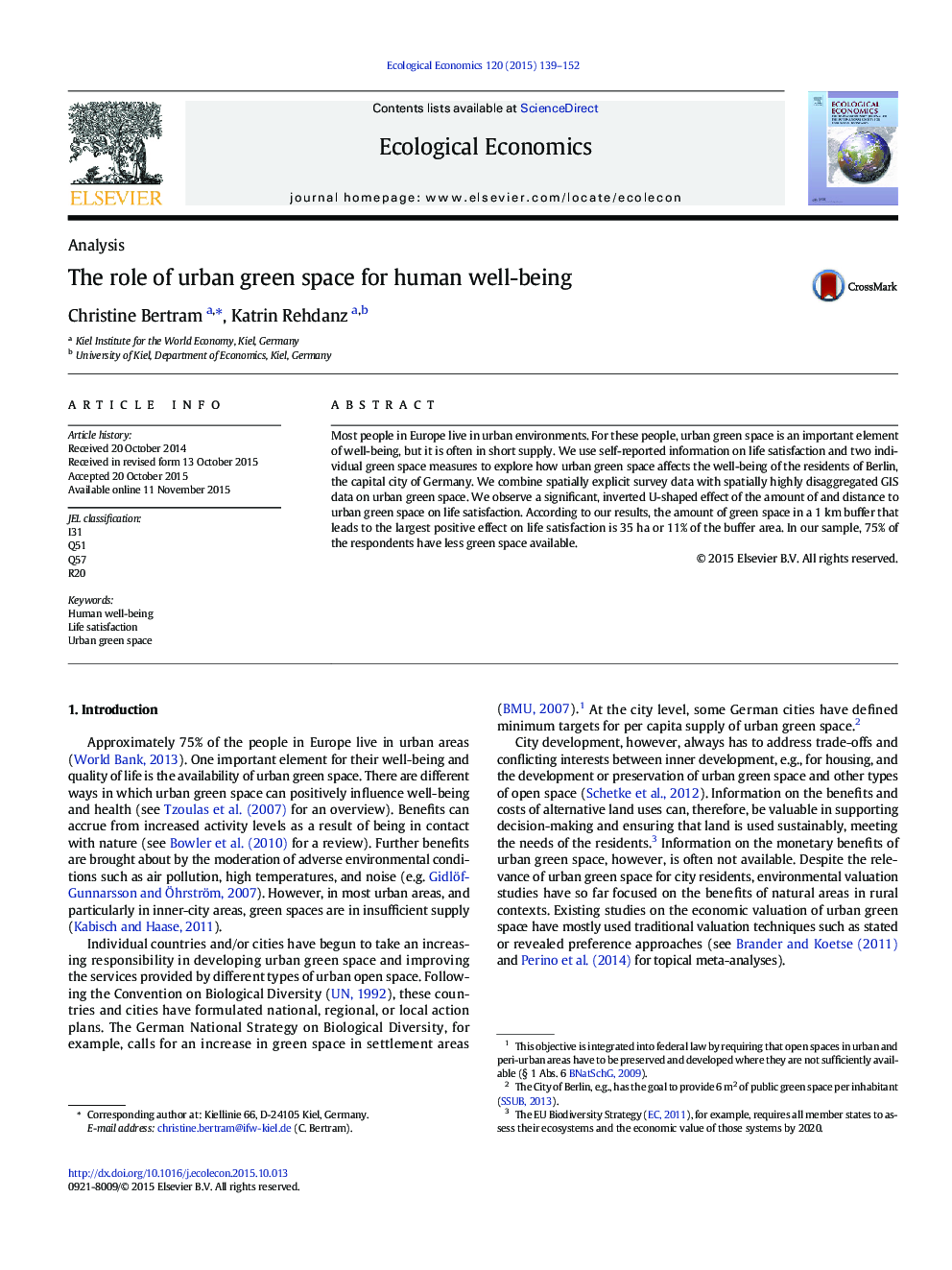| Article ID | Journal | Published Year | Pages | File Type |
|---|---|---|---|---|
| 5049194 | Ecological Economics | 2015 | 14 Pages |
â¢We analyze how urban green space affects life satisfaction.â¢We find an inverted U-shaped effect of urban green space on life satisfaction.â¢The positive effect of green space is largest for an area coverage of 11%.â¢The majority of the respondents have too little green space in their neighborhood.
Most people in Europe live in urban environments. For these people, urban green space is an important element of well-being, but it is often in short supply. We use self-reported information on life satisfaction and two individual green space measures to explore how urban green space affects the well-being of the residents of Berlin, the capital city of Germany. We combine spatially explicit survey data with spatially highly disaggregated GIS data on urban green space. We observe a significant, inverted U-shaped effect of the amount of and distance to urban green space on life satisfaction. According to our results, the amount of green space in a 1Â km buffer that leads to the largest positive effect on life satisfaction is 35Â ha or 11% of the buffer area. In our sample, 75% of the respondents have less green space available.
